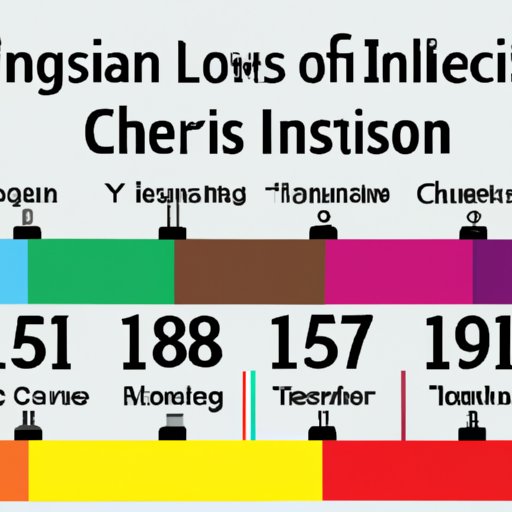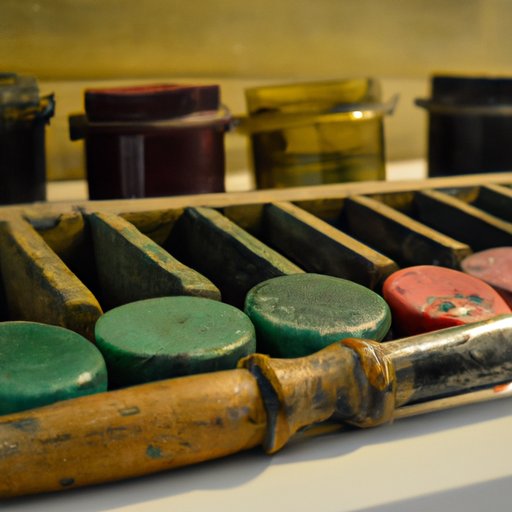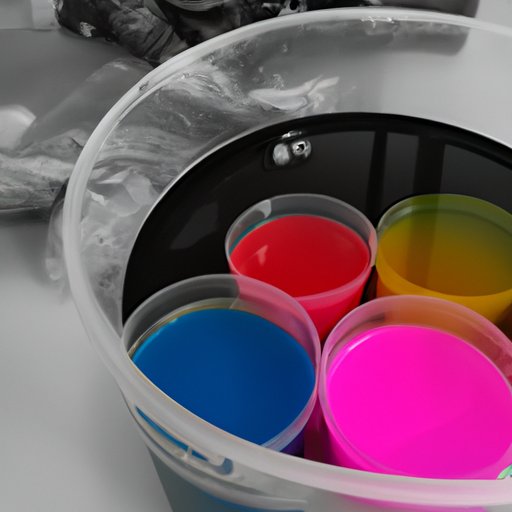Introduction
What is color? How was it invented? This article will explore the history and development of color technology, from its earliest beginnings to modern times. We’ll look at the timeline of color invention, how different pigments are created, the use of color in art, its impact on our lives, and the science behind its creation. By the end of this article, you’ll have a better understanding of the history and development of color technology.

Historical Timeline of Color Invention
The invention of color can be traced back thousands of years. Prehistoric cave paintings were among the earliest examples of color being used for visual expression. These paintings often featured ochre and other earth pigments, which were made by crushing and mixing natural minerals with water or animal fat.
The ancient Egyptians are credited with inventing the first synthetic pigments. They developed a process for creating pigments using minerals and plants, which they then used to create vibrant colors for their art and sculpture. The invention of synthetic dyes in the 19th century revolutionized the production of color, as these dyes could be produced in large quantities and used to create a wide range of colors.
Exploring the Development of Color Pigmentation
Creating color involves combining different pigments, which are substances that absorb certain wavelengths of light and reflect others. Natural sources such as plants, minerals, and chemicals can be used to create pigments. For example, carmine, a deep red pigment, is made from crushed cochineal insects. Prussian blue, a dark blue pigment, is made from iron salts and potassium ferrocyanide.
In addition to natural sources, pigments can also be created synthetically. Synthetic pigments are made from chemical compounds, such as cobalt blue, which is made from cobalt oxide. These synthetic pigments are often more vivid and durable than natural pigments and can be used to create a wider range of colors.

Color in Art: A Look at When it was First Used
Color has been used in art since prehistoric times. Ancient Greek and Roman sculptures were often painted with bright colors, while Byzantine art featured intricate mosaics and religious iconography. In the Middle Ages, art began to focus more on realism, with artists using subtle shades to depict everyday life. During the Renaissance, artists such as Leonardo da Vinci and Michelangelo used bold colors to create dramatic scenes.
Throughout history, color has had an immense impact on art and culture. It can be used to evoke emotion, create atmosphere, and convey meaning. From the vibrant hues of Impressionism to the bold lines of Pop Art, color has played an essential role in the development of art throughout the ages.
How Has Color Affected Our Lives?
Color has had a profound effect on our lives. Color theory, which is the study of how colors interact and how they can be used to create harmony and balance, has been used in design for centuries. Color psychology, which looks at how colors affect our emotions and behavior, has been used in marketing to influence consumer decisions.
Color has become so ingrained in our lives that we often take it for granted. But without the invention of color, our world would be a much duller place.

The Science Behind the Creation of Color
The science behind the creation of color is complex. When light strikes an object, some of it is absorbed by the object and some is reflected back. Different objects absorb and reflect different wavelengths of light, which is what gives them their color. The visible light spectrum consists of seven colors: red, orange, yellow, green, blue, indigo, and violet.
Light is made up of particles called photons. When these photons interact with matter, they can cause electrons in the matter to vibrate. This vibration produces energy, which is what we perceive as color. The frequency of the vibration determines the color; higher frequencies produce shorter wavelengths, which appear as blue, while lower frequencies produce longer wavelengths, which appear as red.
What Motivated People to Invent Color?
Early attempts to capture color were motivated by a desire to make art more lifelike. Painters wanted to be able to accurately portray the world around them, and the invention of color allowed them to do just that. As technology advanced, scientists and engineers began to explore ways to improve color-making materials and processes, leading to further discoveries.
Advances in chemistry and physics have enabled us to understand the science behind the creation of color, allowing us to manipulate and control it to create new and exciting effects.
A Comparison of Ancient and Modern Color Technology
Ancient color technology relied on natural sources such as plants, minerals, and animals. These materials were often expensive and difficult to obtain, and the colors they produced were not always reliable. Modern color technology, on the other hand, relies on synthetic pigments that are cheaper and more reliable. These pigments can be combined to create a wide range of colors, allowing for greater creativity and flexibility.
Modern color technology also offers many advantages over ancient techniques. Pigments can be mixed more precisely, resulting in more consistent colors, and the colors are often brighter and more vibrant. In addition, modern pigments are usually more durable and less prone to fading.
Conclusion
The invention of color has had a profound impact on our lives. From prehistoric cave paintings to modern-day marketing campaigns, color has been used to express ideas, evoke emotion, and create atmosphere. By exploring the history and development of color technology, we can gain a better understanding of how color has shaped our world.
(Note: Is this article not meeting your expectations? Do you have knowledge or insights to share? Unlock new opportunities and expand your reach by joining our authors team. Click Registration to join us and share your expertise with our readers.)
